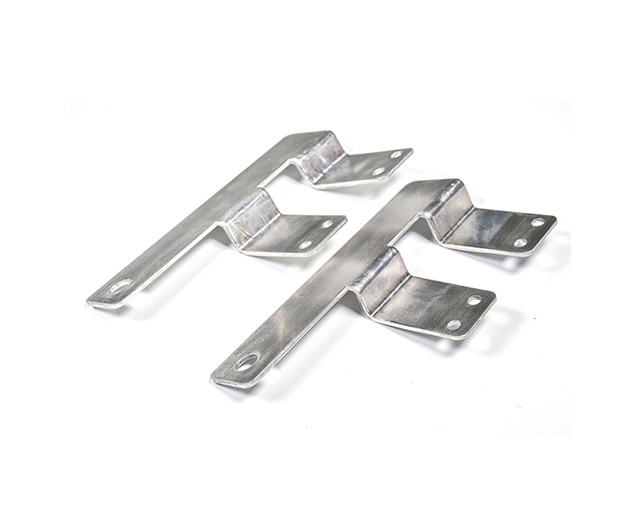2025-07-17 09:34:47
The 6101 Aluminum Bus Bar is a high-conductivity, heat-treatable aluminum alloy widely used in electrical power distribution systems. This alloy belongs to the 6xxx series of aluminum-magnesium-silicon alloys, specifically designed for excellent electrical conductivity combined with good mechanical properties. The 6101 aluminum bus bar typically contains 0.3-0.7% magnesium and 0.35-0.8% silicon, with trace amounts of other elements to enhance its performance characteristics.

The 6101 aluminum bus bar offers outstanding electrical conductivity, typically measuring 55-60% IACS (International Annealed Copper Standard). This makes it approximately 90% as conductive as copper while being significantly lighter and more cost-effective. The specific resistivity at 20°C ranges between 28.3-30.9 nΩ·m, making it ideal for electrical applications where efficient current carrying is essential.
In the T6 temper condition, 6101 aluminum exhibits a tensile strength of 220-260 MPa and yield strength of 195-240 MPa. The elongation at break typically ranges from 10-15%, demonstrating good ductility. Its Brinell hardness measures approximately 65 HB, providing sufficient mechanical strength for most bus bar applications while maintaining good formability.
The alloy has a thermal conductivity of 180-200 W/(m·K), allowing for efficient heat dissipation. Its coefficient of thermal expansion is 23.6 × 10⁻⁶/°C (20-100°C range), similar to other aluminum alloys. The melting point ranges between 585-650°C, with a maximum continuous operating temperature of about 150°C without significant property degradation.
6101 aluminum demonstrates excellent corrosion resistance due to its natural oxide layer formation. In salt spray tests (ASTM B117), it typically shows less than 0.1 mm/year corrosion rate in marine environments. The alloy's resistance to atmospheric corrosion is particularly good, with oxidation rates of 0.4-0.6 μm/year in industrial atmospheres.
With a density of 2.70 g/cm³, 6101 aluminum is about 30% lighter than equivalent Copper Bus Bars. A typical 100mm × 10mm 6101 aluminum bus bar weighs approximately 2.7 kg/m compared to about 8.9 kg/m for a copper equivalent, offering significant weight savings in large installations.
6101 aluminum bus bars are extensively used in switchgear assemblies, panel boards, and busway systems for current ratings typically ranging from 200A to 5000A. Their high conductivity and lightweight properties make them ideal for main power distribution in commercial and industrial facilities.
In solar power installations, 6101 bus bars are commonly used in photovoltaic combiner boxes and inverter connections, handling DC currents up to 1500V. Wind turbine applications utilize these bus bars in generator connections and power conversion systems due to their vibration resistance.
The alloy finds applications in electric vehicle charging stations (supporting up to 350 kW fast charging) and railway electrification systems. Its lightweight nature is particularly valuable in electric bus power distribution where weight reduction is critical.
6101 bus bars are employed in welding machines, industrial furnaces, and large motor connections where they can carry currents up to 10 kA in some specialized applications. Their thermal stability makes them suitable for high-temperature environments found in many industrial settings.
Modern data centers utilize 6101 aluminum bus bars in their power distribution units (PDUs) and uninterruptible power supplies (UPS) due to their space efficiency and ability to handle high current densities (3-5 A/mm²) with minimal voltage drop.
For optimal performance, 6101 aluminum bus bars should be cleaned every 6-12 months depending on environmental conditions. Use a soft brush and isopropyl alcohol solution (70-90%) to remove oxidation and contaminants. Avoid abrasive cleaners that might damage the protective oxide layer. For heavily oxidized surfaces, a 5% phosphoric acid solution can be used followed by thorough rinsing with deionized water.
Bolted connections should be checked for torque every 1-2 years, with recommended torque values typically between 15-25 N·m for M10 bolts depending on the joint design. Apply anti-oxidant compound (containing zinc dust) to contact surfaces during reassembly. Measure contact resistance periodically using a micro-ohmmeter, with values exceeding 15 μΩ indicating potential issues.
In corrosive environments, apply a chromate conversion coating or anodized layer (10-25 μm thick) for enhanced protection. For marine applications, consider powder coating (60-80 μm) with proper surface preparation. Regularly inspect for galvanic corrosion when connected to dissimilar metals, using appropriate dielectric barriers if necessary.
Implement infrared thermography inspections annually or when load changes exceed 20% of rated capacity. Temperature rises above 50°C over ambient typically indicate potential problems. For critical applications, install permanent temperature sensors with alarms set at 90°C for early warning of overheating conditions.
Conduct visual inspections for cracks, deformation, or loose hardware during routine maintenance. Pay special attention to areas subject to thermal cycling or vibration. Check support spacing (typically 300-600 mm for horizontal runs) to prevent excessive sagging or stress concentrations.
Note: All maintenance procedures should follow manufacturer recommendations and applicable electrical codes such as IEC 61439 or ANSI/NEMA PB 2.1. Always de-energize and properly Ground Bus Bars before performing any maintenance activities.